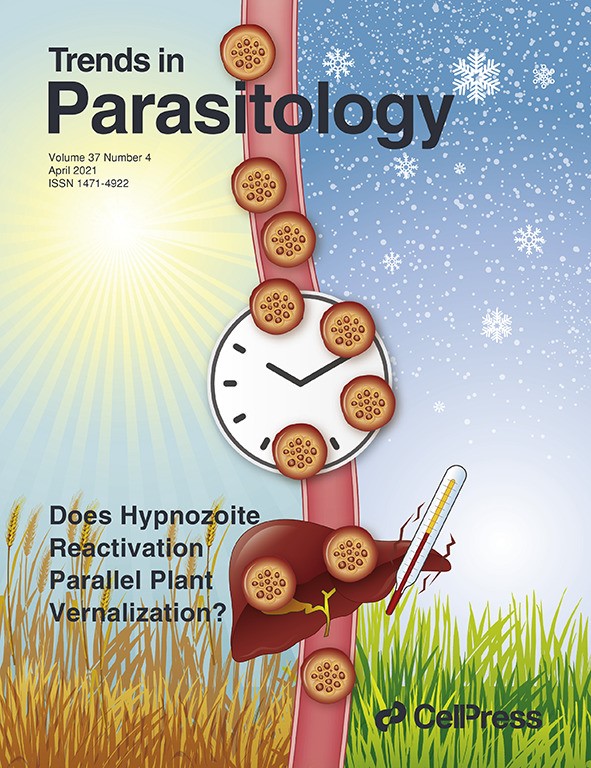Submitted by Rachel Aucott on Thu, 28/10/2021 - 10:15
First front cover
Catherine Merrick, Associate Professor in Parasitology, recently designed and published her first front cover for Trends in Parasitology (April 2021 issue). It accompanies the article 'Hypnozoites in Plasmodium: do parasites parallel plants?’. This article also appeared in a Trends special collection on the topic of 'Resilience'.
Relapsing malaria
The Perspective piece explored a new transdisciplinary hypothesis concerning one of the most mysterious aspects of human malaria parasites: their ability to form ‘hypnozoites’. These parasite cells can remain dormant inside human liver cells for months or years before reactivating to cause a bout of symptomatic malaria. The phenomenon of relapsing malaria has been recognised for hundreds of years and, intriguingly, different strains of the parasite are known to reactivate on different schedules, often synchronised with the mosquito biting seasons in the local area.
Parallels with plants
There are striking parallels with some plants, which can arrest their flowering process through the winter and reactivate it in the spring. In plants, this is called ‘vernalisation’. The molecular biology of vernalization is well understood, but that of Plasmodium dormancy is not. Dr Merrick therefore explored whether the parallels between hypnozoite dynamics and plant vernalization can help us to think about how hypnozoites might work. These fascinating cells are particularly important in areas of the world where we could be close to eliminating malaria, were it not for a large reservoir of asymptomatic people who carry hypnozoites in their livers.

